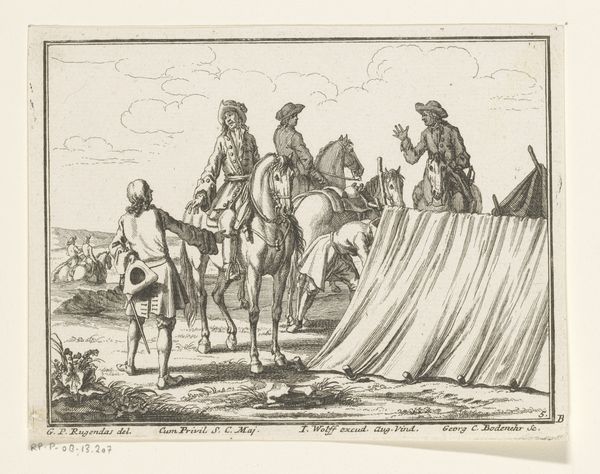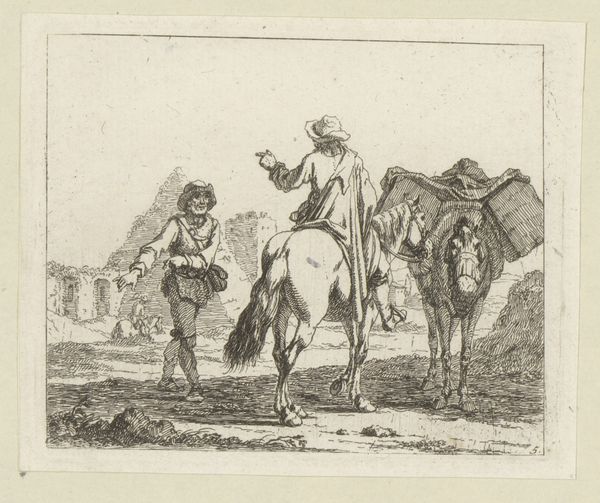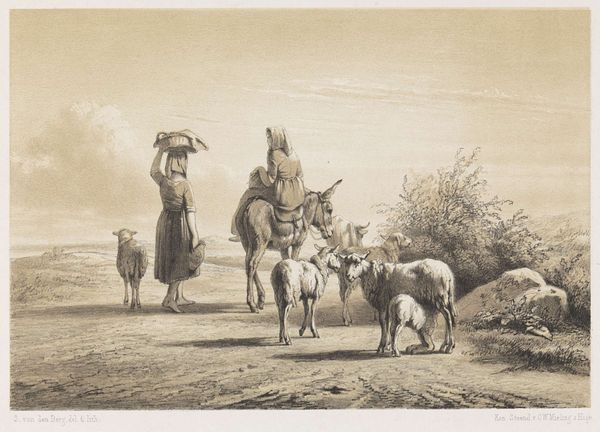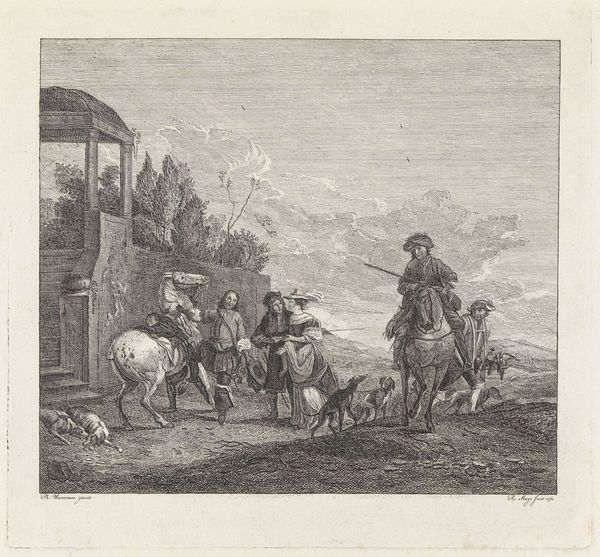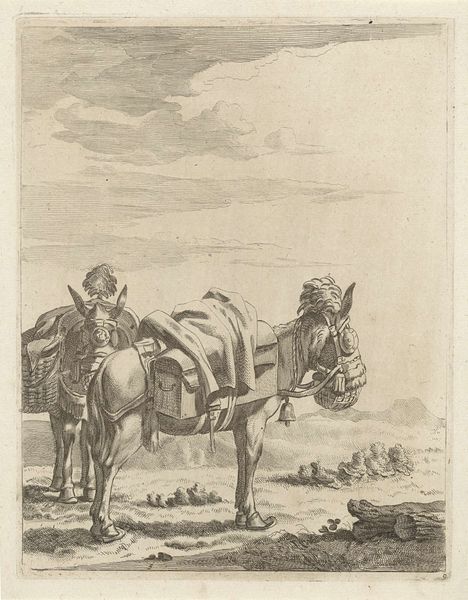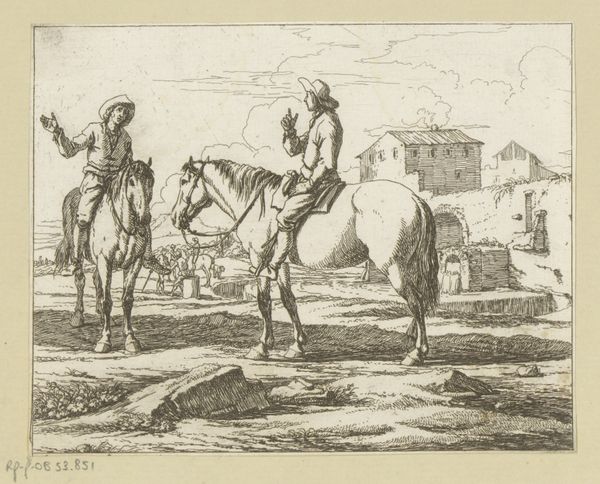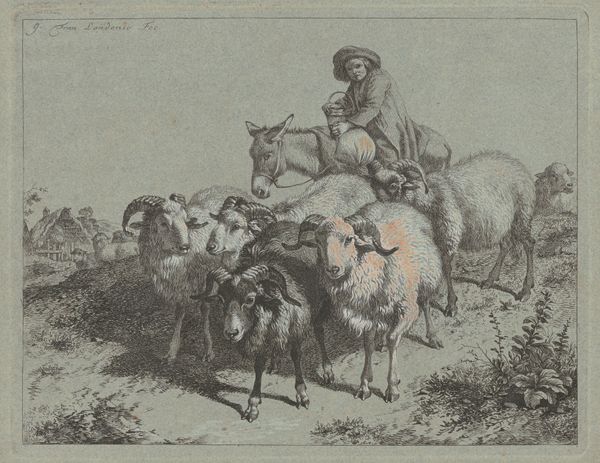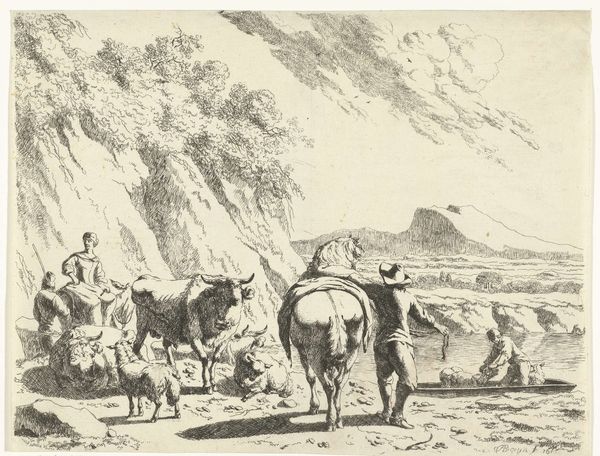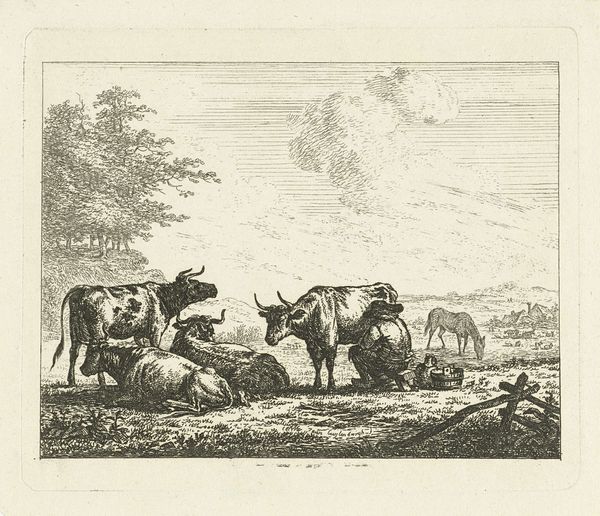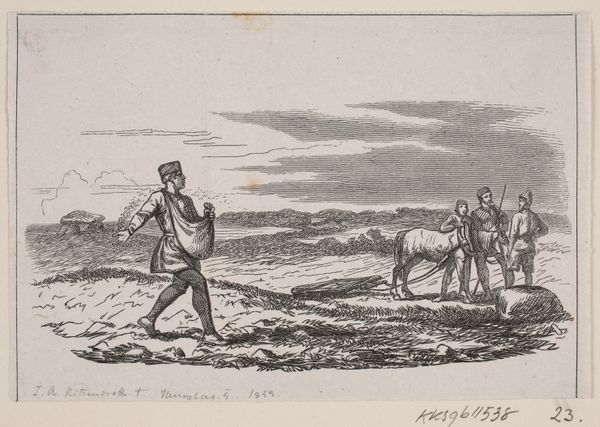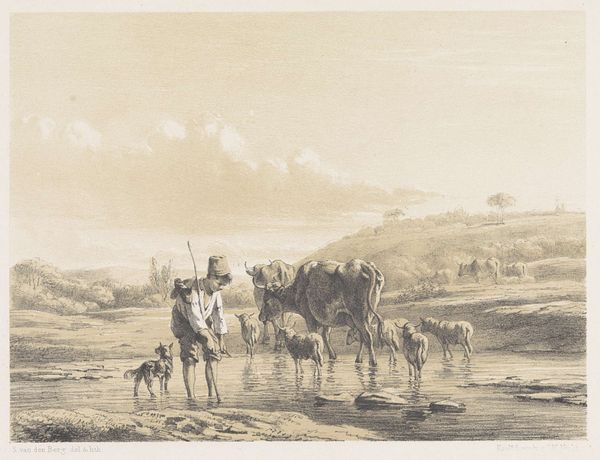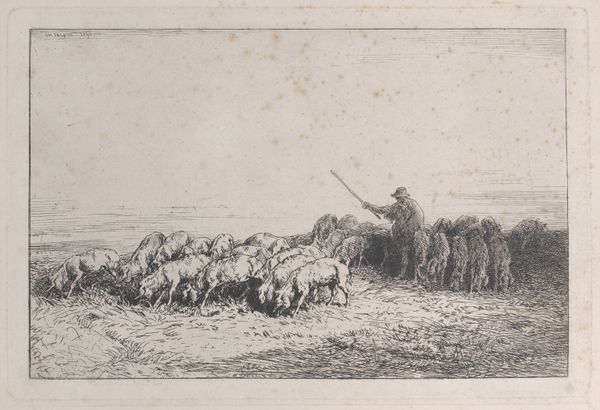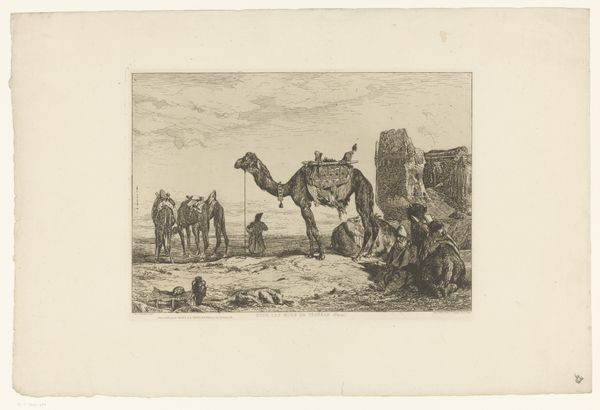
print, etching, engraving
# print
#
etching
#
landscape
#
figuration
#
romanticism
#
line
#
genre-painting
#
engraving
#
realism
Dimensions: height 202 mm, width 256 mm
Copyright: Rijks Museum: Open Domain
Frédéric Théodore Faber created this etching, "Man en vrouw met bepakte ezel," in the Netherlands, during the first half of the 19th century. It depicts a rural scene, a man and woman with a laden donkey, some sheep and a distant tower in the background. The image is not explicitly political, and yet it offers insight into the social values of its time. The Dutch Golden Age of the 17th century established a strong market for landscapes and genre scenes, often celebrating the virtues of everyday life and the beauty of the Dutch countryside. This etching draws on that tradition, portraying the working class with dignity and perhaps a touch of romanticism. The couple appear to be simple folk, but they are rendered with care and attention. It is important to consider who was commissioning and consuming these images. Were they for an urban elite, who appreciated a sentimental view of rural life? Or were they meant for a broader public, reinforcing a sense of national identity rooted in the land? To fully understand this image, one might research the print market in the Netherlands during the 19th century, and consider the role of art institutions in shaping perceptions of national identity.
Comments
No comments
Be the first to comment and join the conversation on the ultimate creative platform.
